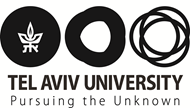Biological & Soft Matter Seminar: Intranuclear HSV-1 DNA ejection induces major mechanical transformations suggesting mechanoprotection of nucleus integrity
Alex Evilevitch, Lund University
Abstarct:
Maintaining nuclear integrity is essential to cell survival when exposed to mechanical stress. Herpesviruses, like most DNA and some RNA viruses, put strain on the nuclear envelope as hundreds of viral DNA genomes replicate and viral capsids assemble. It remained unknown, however, how nuclear mechanics is affected at the initial stage of herpesvirus infection—immediately after viral genomes are ejected into the nuclear space—and how nucleus integrity is maintained despite an increased strain on the nuclear envelope. With an AFM force volume mapping approach on cell-free reconstituted nuclei with docked herpes simplex type 1 (HSV-1) capsids, we explored the mechanical response of the nuclear lamina and the chromatin to intranuclear HSV-1 DNA ejection into an intact nucleus. We discovered that chromatin stiffness, measured as Young’s modulus, is increased by ~14 times, while nuclear lamina underwent softening. Those transformations could be associated with a mechanism of mechanoprotection of nucleus integrity facilitating HSV-1 viral genome replication. Indeed, stiffening of chromatin, which is tethered to the lamina meshwork, helps to maintain nuclear morphology. At the same time, increased lamina elasticity, reflected by nucleus softening, acts as a “shock absorber” dissipating the internal mechanical stress on the nuclear membrane (located on top of the lamina wall) and preventing its rupture.


